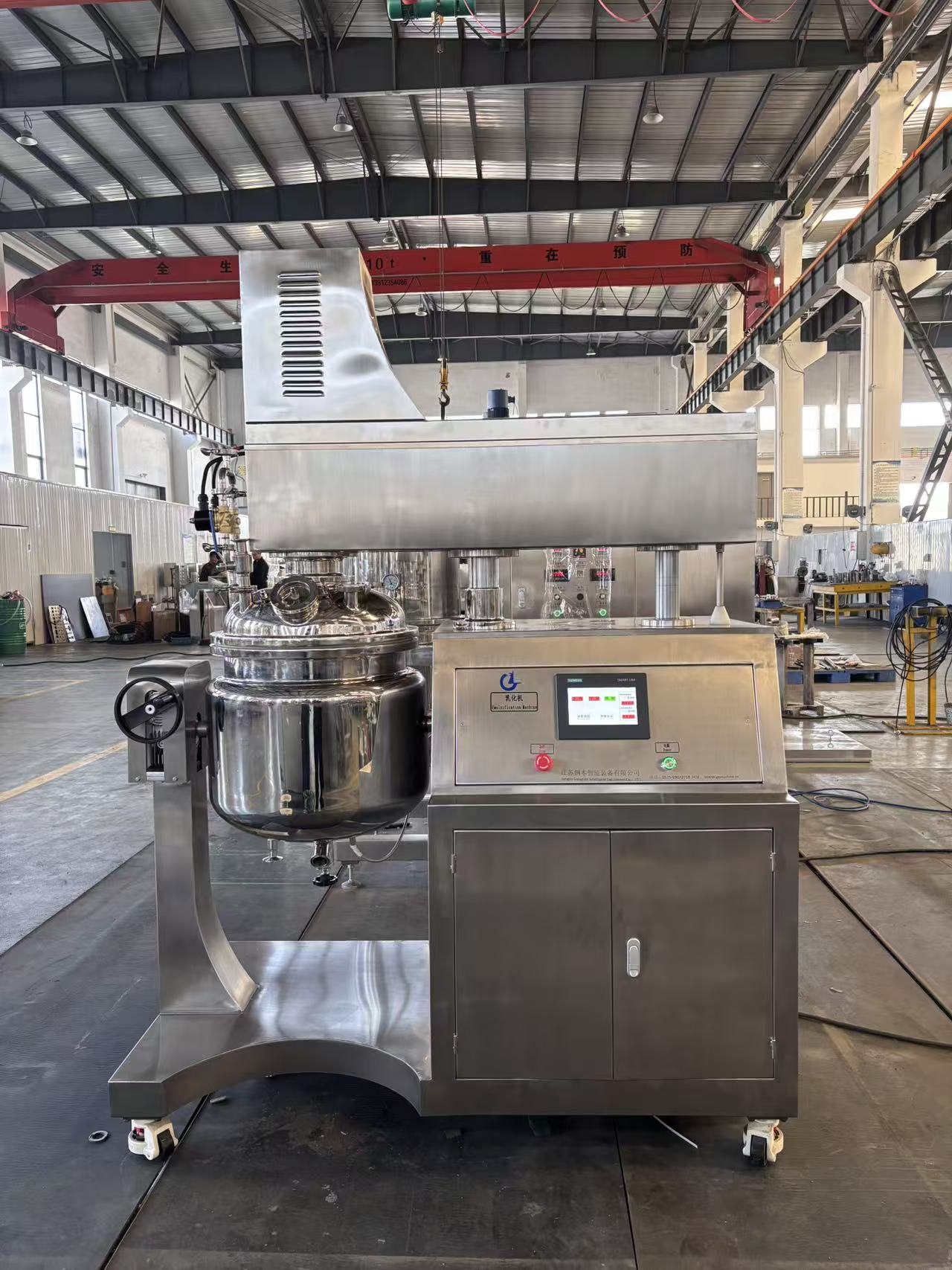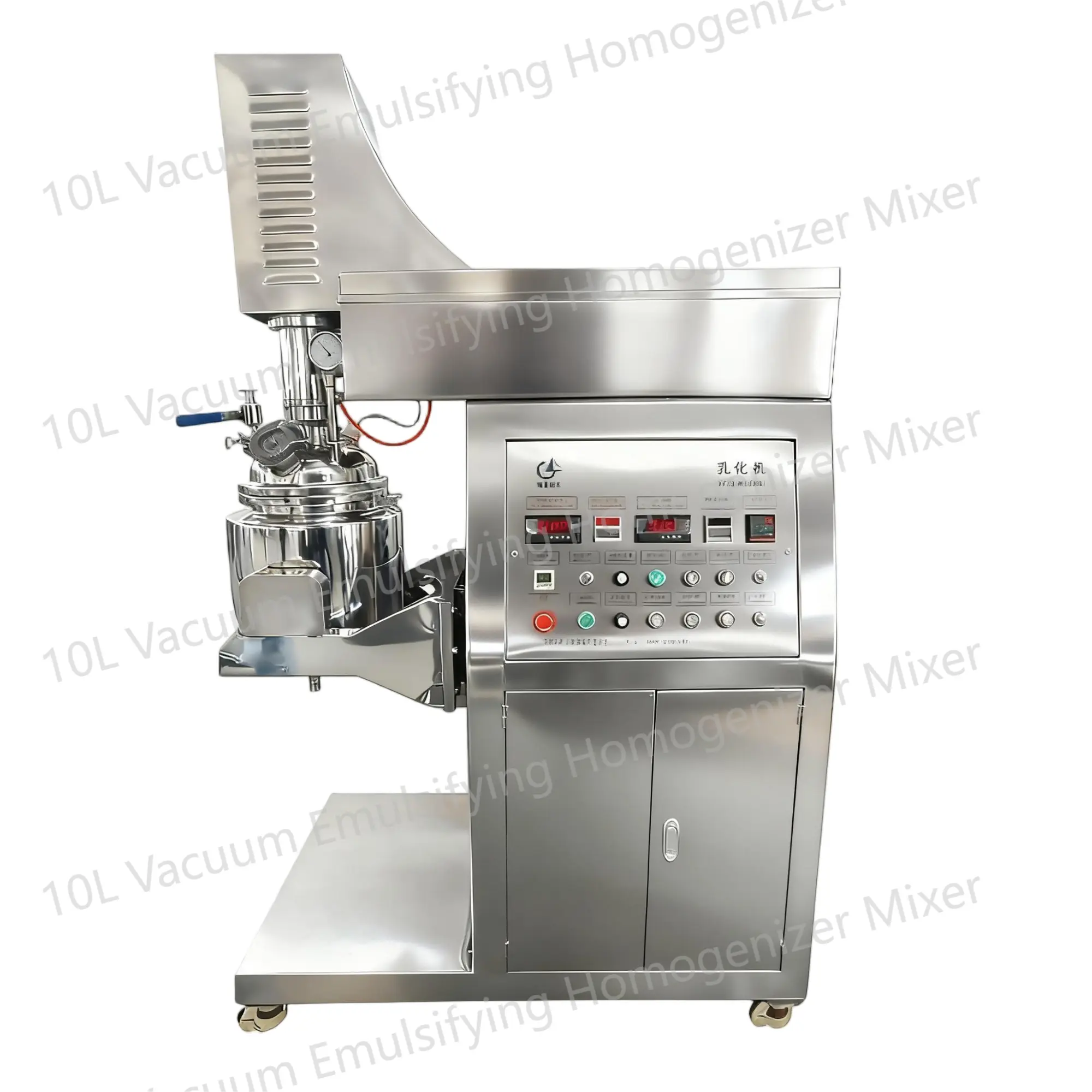Analysis of Key Factors Affecting the Emulsification Effect of Vacuum Emulsifiers
What factors influence the emulsification effect of vacuum emulsifiers? The main ones are as follows:
High-Shear Mixing Emulsifiers
Capable of producing emulsions and suspensions with relatively large particle sizes but a narrow particle size distribution. They feature high shear rates, ensuring the stability of mixed liquids. Different working heads (stator + rotor) are suitable for various process requirements and fluid dynamics.
High-Shear Dispersion Emulsifiers
Primarily used for processing large volumes of emulsions and generating ultra-fine suspensions. Equipped with three working heads, they deliver an extremely narrow particle size distribution and smaller droplets/particles, resulting in superior stability of the mixed liquid. The interchangeable dispersion heads make them adaptable to diverse applications.
High-Speed Shear Homogenizing Emulsifiers
Boasting shear rates exceeding 10,000 rpm (note: corrected from "100.00 rpm" for technical accuracy) and rotor tip speeds up to 40 m/s, the turbulence induced by shear force—combined with specially designed motors—enables particle sizes as small as the nanometer range. These emulsifiers offer stronger shear force and a narrower emulsion particle size distribution.
Laboratory-Scale Dispersion Emulsifiers
Tailored for R&D purposes, they share the same core configuration as large-scale industrial in-line production models, including matching working head types and linear speeds. Process parameters validated during pilot-scale trials require no re-adjustment for industrial scaling, minimizing risks associated with equipment upgrades.
In-Line High-Shear Dispersion Emulsifiers
Designed for ultra-high-precision grinding, capable of achieving nanometer-level particle sizes. With enhanced shear force and a narrower particle size distribution, they are ideal for applications such as vaccine production, cell disruption, colloidal solutions, inks, printing coatings, and pigment mixing.

Emulsification Temperature
Temperature significantly impacts emulsification quality, though there is no rigid restriction. If both oil and water phases are liquid, emulsification can be achieved at room temperature via stirring. Generally, the emulsification temperature depends on the melting point of high-melting components in either phase, as well as the type of emulsifier and the solubility of oil/water phases. Additionally, the temperatures of the two phases should be nearly identical—especially when emulsifying oil phases containing waxes or fats with high melting points (above 70°C). Adding a low-temperature aqueous phase to such systems should be avoided to prevent premature crystallization of waxes/fats, which would result in lumpy or uneven emulsions. Typically, both oil and water phases are controlled between 75°C and 85°C during emulsification; higher temperatures may be required if the oil phase contains high-melting waxes. If viscosity increases excessively during emulsification (hindering stirring), the temperature can be moderately raised. For emulsifiers with a specific phase inversion temperature, emulsification is best performed around this temperature. Temperature may also affect emulsion particle size: for example, when using fatty acid soap anionic emulsifiers via the nascent soap method, emulsification at 80°C yields particles of ~1.8–2.0 μm, whereas emulsification at 60°C results in larger particles (~6 μm). In contrast, temperature has a weaker impact on particle size when using nonionic emulsifiers.
Emulsification Time
Emulsification time clearly influences emulsion quality. Its duration is determined by factors such as the oil-to-water volume ratio, viscosity of both phases, viscosity of the final emulsion, type and dosage of emulsifier, and emulsification temperature. The primary goal is to ensure thorough emulsification, which is closely linked to the efficiency of the emulsification equipment. Optimal emulsification time can be determined based on experience and experimentation. For instance, emulsification with a homogenizer (3,000 rpm) typically takes only 3–10 minutes.
Stirring Speed
Emulsification equipment plays a crucial role in emulsification, with stirring speed being a key factor. Moderate stirring speed ensures adequate mixing of oil and water phases: excessively low speeds fail to achieve uniform mixing, while excessively high speeds introduce air into the system, creating a three-phase system that destabilizes the emulsion. Thus, air ingress must be avoided during stirring.
Other Factors
Additional factors affecting the emulsification effect include the type of emulsifying head, its shear speed, tooth profile structure, residence time of materials in the dispersion chamber, emulsification/dispersion duration, and number of cycles. When using vacuum emulsifiers, efforts should be made to mitigate these influencing factors to maximize their performance.
News
- Latest News
- Solutions
- FAQ
Recommend Products
-
 5L Vacuum Emulsifying Homogenizer Mixer
5L Vacuum Emulsifying Homogenizer MixerThe 5L vacuum emulsifying mixer is a device designed for emulsifying and mixing various substances in a vacuum environment. This equipment is equipped with a mixing tank with a capacity of 5 liters and is widely applied in industries such as food, pharmaceuticals, cosmetics, and pesticides.
-
 5L PLC-Screen Vacuum Emulsifying Mixer
5L PLC-Screen Vacuum Emulsifying MixerThe 5L PLC-Screen Vacuum Emulsifying Mixer is a device designed for emulsifying and mixing various substances in a vacuum environment. This equipment is equipped with a mixing tank with a capacity of 5 liters and is widely applied in industries such as food, pharmaceuticals, cosmetics, and pesticides.
-
 10L Vacuum Emulsifying Homogenizer Mixer
10L Vacuum Emulsifying Homogenizer MixerThe 10L Vacuum Emulsifying Mixer is a device used for emulsifying and mixing various substances in a vacuum environment. It is commonly used in industries such as food, cosmetics, and pharmaceuticals.


 English
English Russian
Russian French
French Spanish
Spanish Portuguese
Portuguese Korean
Korean Japanese
Japanese Thai
Thai





